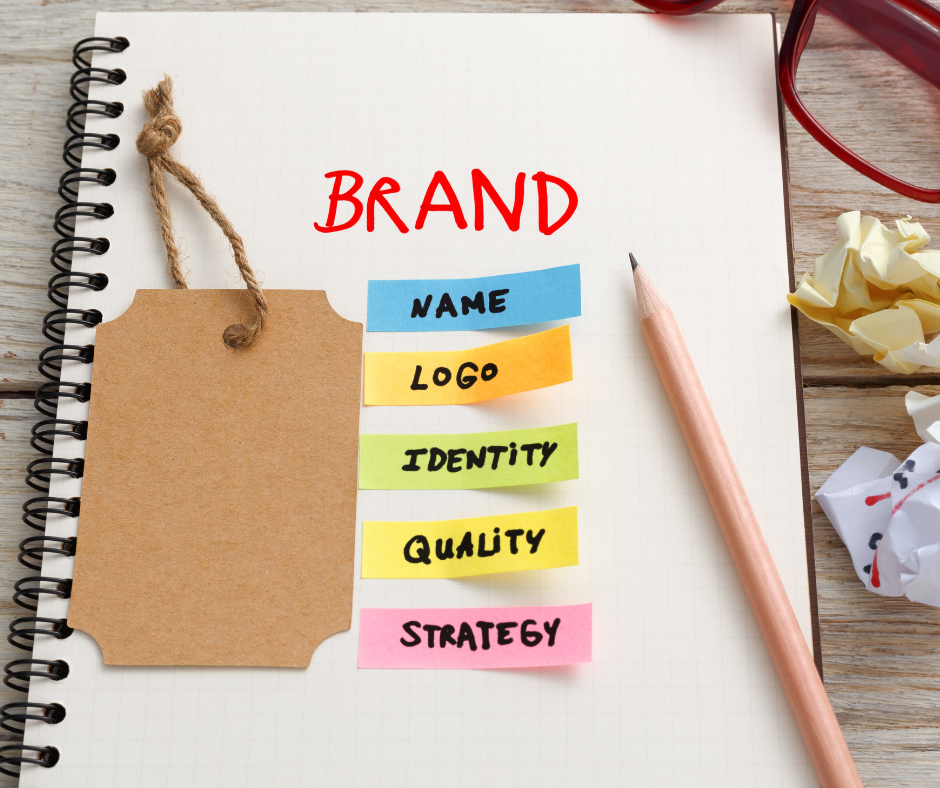Unleash Your Brands Power: Crafting Memorable Brand Guidelines

In today's competitive business landscape, establishing a strong brand identity is crucial for businesses. One essential tool in this process is developing comprehensive brand guidelines.
In this blog, we will delve into the significance of brand guidelines, explore the key elements involved, and provide detailed insights on effectively implementing and utilizing them. By the end, you'll have a comprehensive blueprint to build your brand guidelines and propel your business toward success.
Understanding the Significance of Brand Guidelines
Defining brand guidelines:
Brand guidelines, also known as brand standards or brand manuals, are a set of rules and recommendations that outline how your brand should be presented visually and verbally. They serve as a blueprint for maintaining consistency across all brand touchpoints.
Benefits of having brand guidelines:
- Maintaining consistency and coherence: Brand guidelines ensure that your brand's visual and verbal elements are consistent across various platforms, fostering a sense of reliability and professionalism. This consistency builds trust with customers and enhances brand recognition.
- Establishing a unique brand identity: Guidelines help create a distinct brand personality that differentiates your business from competitors, resonating with your target audience. Consistency in messaging and design elements cultivates a memorable and authentic brand identity.
- Streamlining decision-making processes: With clear guidelines, you can make strategic and consistent branding decisions without constantly reinventing the wheel. This saves time and resources while maintaining brand integrity.
- Enhancing customer recognition and loyalty: Consistent branding builds familiarity and trust with customers, encouraging brand recognition and fostering long-term loyalty. When customers consistently encounter a coherent brand experience, they are more likely to engage and remain loyal to your business.
Laying the Foundation: Defining Your Brand Identity
- Crafting your brand values and mission: Define your core values, mission statement, and long-term vision. These foundational elements will guide the development of your brand guidelines. They should align with your business's purpose and resonate with your target audience, setting the tone for your brand's personality.
- Identifying your target audience: Understand your target audience's demographics, preferences, and behaviors. Tailor your brand guidelines to align with their expectations and desires. Consider factors such as age, location, interests, and aspirations when crafting your brand identity.
- Conducting competitor analysis: Analyze your competitors' branding strategies to identify opportunities for differentiation. Highlight what sets your brand apart and leverage it in your guidelines. Identify gaps in the market and determine how your brand can provide unique value to your target audience.
- Developing a brand persona or voice: Define your brand's personality, tone of voice, and communication style. This persona should align with your brand values and resonate with your target audience. Consider whether your brand is friendly, authoritative, humorous, or sophisticated, and ensure that it remains consistent across all communication channels.
Elements of Brand Guidelines
Logo and Visual Identity:
- Design principles and logo usage: Establish guidelines for logo placement, proportions, clear space, and minimum size. Specify variations for different applications, such as horizontal or vertical orientations. Outline rules for usage on different backgrounds and in different color modes.
- Typography and color palette guidelines: Define font styles, sizes, and hierarchy for headings, subheadings, and body text. Specify primary and secondary colors, along with their appropriate usage. Provide guidelines for color combinations, gradients, and textures to maintain a consistent visual identity.
- Imagery and graphic style guidelines: Determine the style, mood, and types of imagery that align with your brand identity. Provide examples and usage guidelines for photography, illustrations, icons, and other visual elements. Outline graphic treatments and effects that should be used consistently.
Tone of Voice and Messaging:
- Defining brand messaging guidelines: Establish the key messages and brand story that align with your brand values and resonate with your target audience. Define the overarching themes and narratives that should be consistently communicated across all channels.
- Language style and tone recommendations: Specify the preferred language style, tone, and vocabulary that reflect your brand's personality. Determine if your brand should adopt a formal, casual, conversational, or professional tone. Provide guidelines for writing styles, grammar, punctuation, and preferred expressions to ensure consistency.
- Consistency across communication channels: Ensure that your brand guidelines cover all communication channels, including website content, social media posts, email marketing, and customer support. Maintain consistency in tone, voice, and messaging to create a cohesive brand experience for your audience.
Brand Collateral and Applications:
- Stationery, business cards, and letterheads: Specify design templates, color usage, and layout guidelines for printed materials. Provide guidelines for the placement and sizing of logos, typography, and other visual elements to maintain consistency across stationery.
- Website design and user interface: Establish guidelines for website layout, navigation, typography, and imagery to maintain a consistent online presence. Define the grid system, button styles, image treatments, and overall visual hierarchy to create a cohesive user experience.
- Social media templates and guidelines: Provide guidelines for social media posts, including image dimensions, caption style, and usage of hashtags and brand mentions. Outline rules for creating visually cohesive and engaging social media content while maintaining consistency in branding elements.
Implementing and Enforcing Brand Guidelines
Internal brand education and training:
- Educate your team about the importance of brand guidelines and how they contribute to a consistent brand experience. Provide training sessions to familiarize employees with the guidelines and ensure they understand their role in implementing and upholding them.
- Ensuring brand consistency across all touchpoints: Regularly review and monitor brand materials to ensure they align with the guidelines. This includes marketing campaigns, advertising materials, packaging, product design, and any other customer-facing touchpoints. Conduct regular audits to identify and address any inconsistencies.
- Regular brand audits and updates: Conduct periodic brand audits to assess the effectiveness and consistency of your brand guidelines. Evaluate how well they align with the evolving market landscape, industry trends, and customer preferences. Make updates and refinements to your guidelines to adapt to changes and maintain relevance.
- Establishing brand guardians and enforcing compliance: Appoint individuals or teams responsible for overseeing brand compliance. These brand guardians will monitor brand implementation, provide guidance, and ensure that all stakeholders adhere to the guidelines. Encourage open communication and a collaborative approach to ensure consistent compliance throughout the organization.
Tips for Effective Brand Guideline Usage
- Communicating guidelines to stakeholders: Ensure that all employees, partners, and external stakeholders have access to the brand guidelines. Develop a centralized platform or document repository to make the guidelines easily accessible. Clearly communicate the purpose and value of the guidelines to encourage their adoption and understanding.
- Encouraging collaboration and feedback: Create channels for feedback and suggestions from employees and stakeholders. Encourage collaboration by involving relevant team members in the guideline development process. Incorporate valuable feedback to improve the guidelines and enhance brand consistency.
- Flexibility and adaptation to evolving trends: While guidelines provide structure, allow for flexibility to adapt to new trends, technologies, and customer preferences. Continuously assess and update your guidelines to stay relevant and ensure that your brand remains fresh and appealing.
- Measuring brand performance and making data-driven adjustments: Establish metrics to measure brand performance and monitor key indicators such as brand awareness, customer perception, and loyalty. Utilize data-driven insights to make adjustments and improvements to your brand guidelines. Regularly review the metrics and iterate on your guidelines based on the insights gained from the data. Use analytics tools, customer feedback, and market research to inform your decisions and make data-driven adjustments that enhance your brand's effectiveness.
Building comprehensive brand guidelines is an essential step for businesses in establishing a strong and memorable brand identity.
By defining your brand identity, creating guidelines for visual identity, tone of voice, and brand collateral, and implementing and enforcing these guidelines effectively, you can maintain consistency, establish your uniqueness, streamline decision-making, and enhance customer recognition and loyalty.
At MediaVantage, we understand the importance of brand guidelines and the impact they can have on your business's success. Our team of branding experts is dedicated to helping businesses like yours develop and implement comprehensive brand guidelines that align with your vision and resonate with your target audience.
Partnering with MediaVantage means gaining access to our wealth of experience in brand strategy, design, and implementation. We will work closely with you to craft brand guidelines tailored to your business's unique needs, ensuring every aspect of your brand reflects your values and resonates with your customers.



